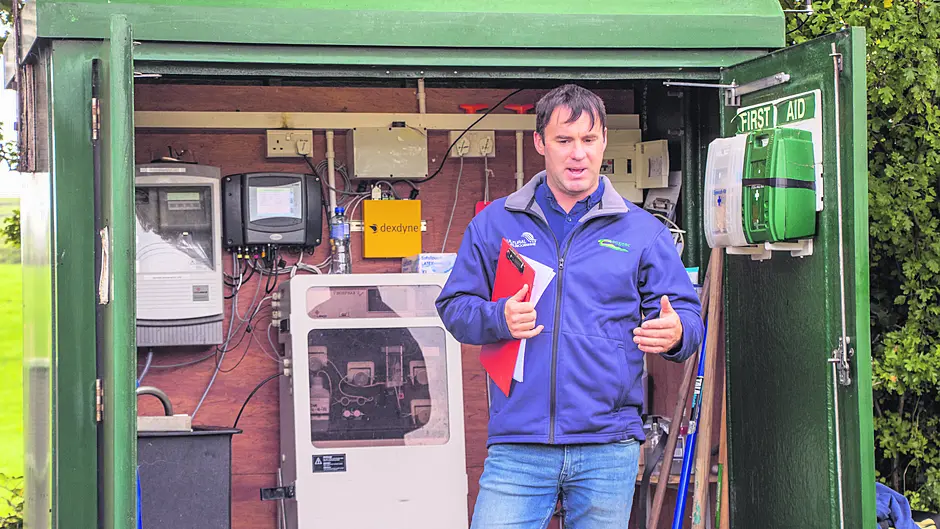Results from extensive research undertaken by Teagasc challenge the belief that increases in stocking levels are directly impacting local water quality which comes as good news for farmers
THE Irish Agricultural Catchment Programme (ACP) conducted by Teagasc has been monitoring water quality in six locations across Ireland, including Timoleague, since 2010, to investigate the impact of agriculture on water quality in these catchments.
The Timoleague catchment is 8km in size and stretches from Ardgehane in Barryroe to Barryshall, just west of Timoleague.
Latest results show that over the last four-year rolling period (2019 to 2022) there is a decreasing trend in nitrate-N concentrations in the catchment.
In 2010 it was 5 mg/l, by 2019 it went to its highest level of 7.15 mg/l, but had reduced to 4.95 mg/l in 2022, driven by more strategic spreading of fertiliser and slurry.
The report, the ‘Impact of Nitrogen Management Strategies within Grass Based Dairy Systems’, reveals that nitrate-N concentrations in groundwater and streams are primarily controlled by catchment physical characteristics (soil hydrogeological factors), meteorological conditions, and agronomic practices.
Encouragingly for farmers, it found that stocking rate, in and of itself, wasn’t a primary driver of nitrate-N concentrations in most cases.
For example, the ACP study catchment of Timoleague is dominated by pasture-based dairy systems, and has the most land in derogation (66% in 2018) of all the ACP catchments.
Despite an increase in the organic loading (stocking rate) in this catchment from 134 to 182 kg N/ha in 2008 to 2018, there was no statistically significant temporal trend in the ground water nitrate-N concentration during the 2010 to 2017 period.
In contrast, the Castledockerell catchment, which is dominated by spring barley and has a low annual organic N loading, showed a minor increase from 35 to 45 kg N/ha from 2008 to 2018.
Dairy farmer and FG Senator Tim Lombard described the results as hugely encouraging.
‘It shows that the changes farmers are introducing in terms of the quality and quantity of fertiliser spread and how they spread slurry, is working,’ said the Senator who previously hit out at the EPA for not better supporting farmers.
Meanwhile, the analysis and scenarios completed in the Teagasc report found that reducing the maximum stocking rate from 250 kg N/ha to 220 kg N/ha for Ireland’s nitrates derogation, on top of the previous stocking rate reduction due to banding, could result in farmers moving away from grassland-based milk production systems toward more cropping and conserved forage systems, in an attempt to achieve higher milk production per cow.
This could have a negative impact, from both a climate change and water quality perspective, the report said.
Overall, farm profitability would also be reduced by €4,622, €8,951 and €12,861 at chemical N rates of 225, 200 and 175 kg N/ha, respectively. Net profit per hectare was reduced by €116/ha, €224/ha and €322/ha respectively.
Deputy Christopher O’Sullivan, who is also Fianna Fáil’s spokesman on climate and biodiversity, said the Teagasc paper showed that a cut in derogation could see dairy farmer incomes fall by €374/ha.
And he said the new measure may also impact Ireland’s climate goals because land that potentially could be used for extra tillage or forestry is now being bought up in order to comply with the stocking rates.
‘We have to think twice about implementing this new policy,’ he said, adding that the EPA is soon expected to publish its water quality results.










